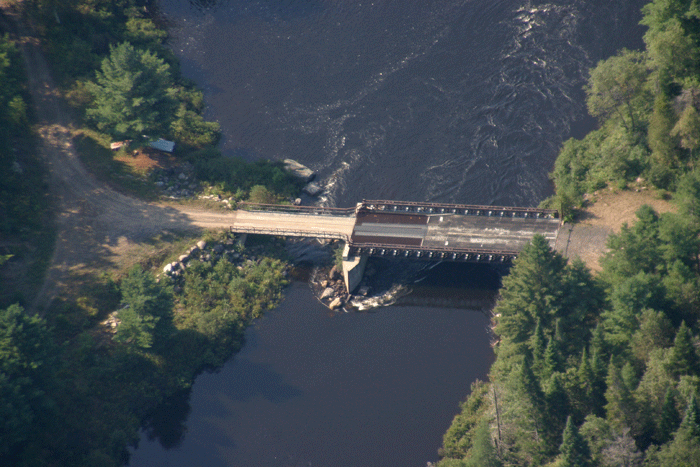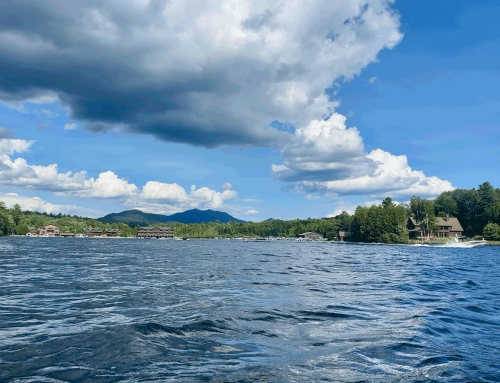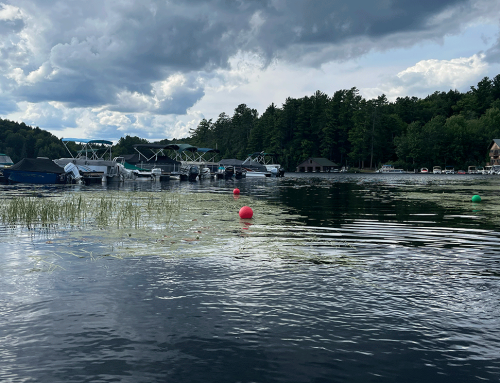This is the third of three “reflections” on the recent approval of the new Essex Chain Lakes Complex Unit Management Plan that widely violated longstanding state environmental laws and management policies and regulations for the Forest Preserve. Part One focused on the poor public review process and the Part Two focused on violations of various policies.
In many ways the Forest Preserve defines the Adirondack Park experience. The trails, mountains, lean-tos, campsite and deep beauty of the forests are what the Adirondacks is all about. The Forest Preserve provides the dramatic scenic backdrop across the Park and brings millions of visitors to the Adirondacks. The Forest Preserve also generates tens of millions in school and local tax revenues too.
The recently approved Essex Chain Lakes Complex Unit Management Plan (ECCUMP) violates the Wild, Scenic and Recreational Rivers Act (Rivers Act) and its regulations. The ECCUMP violates the Rivers Act in four key ways: 1) Retention of the Polaris Bridge in a Scenic River corridor; 2) Construction of the Cedar River Bridge in a Scenic River corridor; 3) Designation and maintenance of the Chain Lakes Road for motor vehicles within a Wild River corridor; and, 4) Designation and maintenance of a floatplane access campsite within a Wild River corridor.
The Adirondack Park Agency (APA) and Department of Environmental Conservation (DEC) employed tactics, aptly characterized by one APA Commissioner as “sleights of hand” and “legal fictions” in order to approve new motorized uses within classified Scenic River and Wild River corridors on the Hudson and Cedar Rivers. Various maneuvers were employed to get around restrictions in the Rivers Act and its regulations.
The DEC and APA aim to retain the Polaris Bridge and build a new bridge over the Cedar River for use as part of a new snowmobile trail that connects Indian Lake and Minerva. The location of the Polaris Bridge where it spans the Hudson River and that where the new Cedar River Bridge is to be constructed are both classified as Scenic under the Rivers Act. Both bridges will be used for snowmobile trails, though public motorized uses are prohibited by the Rivers Act in Scenic River corridors. The APA and DEC also aim to allow new public motorized uses within the Wild River corridors on the Hudson and Cedar Rivers despite even stronger prohibitions in the Rivers Act and its regulations.

The Polaris Bridge will be retained under the new Essex Chain Complex Unit Management Plan, despite state laws that prohibit motorized uses in Scenic River corridors as this area in classified under the NYS Wild, Scenic, and Recreational Rivers Act. State agencies employed unusual legal interpretations to authorize this bridge for public motor vehicle use on the Forest Preserve.
The Polaris Bridge was built in the 1990s for forest management purposes. It has never been used for any kind of public access until the state bought the Finch lands. To keep the bridge and use it for snowmobiles, the state needs to get around prohibitions of public motorized uses in DEC’s Rivers Act regulations. The restrictions on public motorized uses within Scenic River corridors are evident in various statements made by the DEC in its Environmental Impact Statement (EIS) promulgated at the time of adoption of Rivers Act regulations (6 NYCRR Part 666 in 1986). In its
“Public Response” section, the EIS states:
The Regulations have been amended to prohibit motorized open space recreational uses in scenic river areas. Therefore, bridges for this use have been prohibited. (Page 57)
The Department agrees that motorized recreational vehicles should not be allowed to operate in scenic river areas due to their relatively undeveloped nature and the concurrent extensive low intensity recreational and other passive outdoor uses which predominately take place within such river areas and conflict with motorized recreational vehicles. (Page 58)
A maximum width of four feet has been established for foot trails. This will assist in precluding inappropriate motorized uses on such trails and prevent designation of roads as foot trails. (Page 31)
The APA-DEC never publicly discussed these statements. To get around this these clearly declarative statements about the intent of DEC’s Rivers Act regulations, the APA-DEC employed two arguments: 1) the State Land Master Plan allows motorized uses in Wild Forest areas, which is where the Polaris Bridge and Cedar River Bridge are located; 2) Public motorized recreational use of these bridges predated the Rivers Act. As we’ll see below, the APA willfully aided and abetted the DEC’s desire to use these bridges.
The APA evaluated the lawfulness of the Polaris Bridge narrowly, taking the position in a staff memo that the State Land Master Plan (SLMP) requires only that Scenic River corridors “be managed in accordance with the guidelines and criteria for lands classified as Wild Forest. In Wild Forest areas, snowmobile trails with bridges are allowed.” This narrow reading of the SLMP stands in direct conflict with DEC’s regulations with regard to allowable uses in Scenic River corridors. Much the same analysis was employed for the Cedar River Bridge.
Two APA Commissioners voted against the APA-DEC interpretation of the Rivers Act in support of these bridges. Sadly, eight others voted to approve these new uses and to support these dodgy legal arguments.
The APA-DEC never acknowledged in public discussion, or in the ECCUMP, a guiding principle in the Rivers Act for how to adjudicate conflicting state agency rules and regulations:
§ 15-2721. Conflict with other laws.
Any section of the state wild, scenic and recreational rivers system that is or shall become a part of the Forest Preserve, the Adirondack or Catskill Parks or any other state park, wildlife refuge, or similar area shall be subject to the provisions of this title, and the laws and constitutional provisions under which the other areas may be administered, and in the case of conflict between the provisions of those laws and constitutional provisions and the provisions of this title, the more restrictive provisions shall apply.
In this case, DEC’s Rivers Act regulations prohibiting public motorized uses in a Scenic River corridor should have trumped APA regulations allowing motorized uses in Wild Forest areas. The more restrictive rule should have carried the day, but it was subverted.
This dictate in the Rivers Act was also handily ignored with respect to trail width. Both the Cedar River Bridge and Polaris Bridge will be part of a class II community connector trail system, which under the APA-DEC Snowmobile Trail Guidance policy allows for 9-12 foot wide trails. The Rivers Act regulations for Scenic Rivers limit trail width to four feet: ” ‘Trail’ means a marked and maintained path or way four feet or less in width, and located and designed to provide for reasonable access in a manner causing the least effect on the local environment” (6 NYCRR Part 666.3 Definitions).
Again, APA-DEC used the weaker standard allowed under the Guidance and not the more restrictive in DEC regulations. It should be pointed out that in any case official state regulations should always supersede an adopted policy. To get around this requirement, the ECCUMP also states that DEC will issue itself a “variance” for the wider trail.
Beyond these efforts to ignore the reality of the Rivers Act, the APA-DEC also make the claim that they are simply retaining historic motorized uses of the Polaris Bridge that predates the Rivers Act. In the ECCUMP, DEC states:
DEC records indicate that a bridge existed at this location previously, and both DEC and the APA issued permits to allow the construction of the existing bridge, which subsequently allowed motor vehicle use for timber harvesting and recreational purposes. Therefore, the operation of motor vehicles, including snowmobiles, on the trail leading to and over the Polaris Bridge is considered an existing land use and is allowed to continue pursuant to the WSRRS Act statute and its implementing regulations.
The “recreational purposes” in this case that provided an “existing land use” was private and exclusive recreational access that was subject to lease payments. It is a legal sleight of hand for the DEC to argue that these former private exclusive rights can be somehow be grandfathered and exempted from the Rivers Act restrictions. Here, state agencies are attempting to “grandfather” land uses that pre-dated the Rivers Act, which would otherwise be prohibited.
Such grandfathering occurs for existing private uses on private lands within a designated river corridor at the time of the Rivers Act enactment, such as a logging road or a private residence or a railroad. It’s a new day when state agencies use grandfathering of past motor vehicle uses to justify continuation on lands once they become Forest Preserve. Long-time Adirondack Park attorneys argued that such grandfathering can only be done on private lands for private land uses.
DEC also states that it will need to issues itself a permit and variance in order to retain and use the Polaris Bridge for snowmobiles:
The WSRRS Act, and its implementing regulations found in Part 666 of Title 6 of the Official Compilation of Codes, Rules and Regulations of the State of New York (6 NYCRR), regulate activities within a Scenic River Area, defined geographically as the river and the area within ½ mile from the river on both sides. The construction of a multiple-use trail within a Scenic River Corridor requires the DEC to issue a permit in accordance with 6 NYCRR section 666.13[E][3] (for the construction of a new trail) and section 666.9 [d] (to allow motorized open space recreational uses). A variance for the width of the trail may also be needed pursuant to 6 NYCRR section 666.9[a][2] because the term “trail” is defined by the WSRRS Act implementing regulations as a “path or way four feet or less in width.” (See 6 NYCRR section 666.3[lll]).
The process for such a permit or variance is straight forward, though the Rivers Act regulations provide various tests, such as that the use is consistent with the River Act, that the activity will not have an adverse impact, that there are no reasonable alternatives, and that these actions will “preserve, protect or enhance the resources and values of designated rivers.” Retention of the Polaris Bridge and construction of the Cedar River Bridge fails on all counts. The tests for a variance are arguably even higher.
The Rivers Act and its regulations provide even greater protections for “Wild River” corridors, which should be managed as Wilderness lands. No motorized uses are allowed. Yet, the APA and DEC approved use of the Chain Lakes Road South for snowmobile use within the Hudson River Wild River corridor. They also approved the location of a special floatplane-only campsite on the north shore of Pine Lake within the Wild River corridor of the Cedar River. Various maneuvers involving “grandfathering” of private uses on public lands, among other things, are being used to justify these decisions.
The public spoke out loud and clear in multiple public hearings on management of the Essex Chain acquisition: 87% called for removal of the Polaris Bridge. The state agencies went another direction and made their decisions. Leading legal thinkers in the Adirondacks pointed out the wrongness of the state’s legal interpretations on these matters. The only recourse at this point is a legal challenge.





